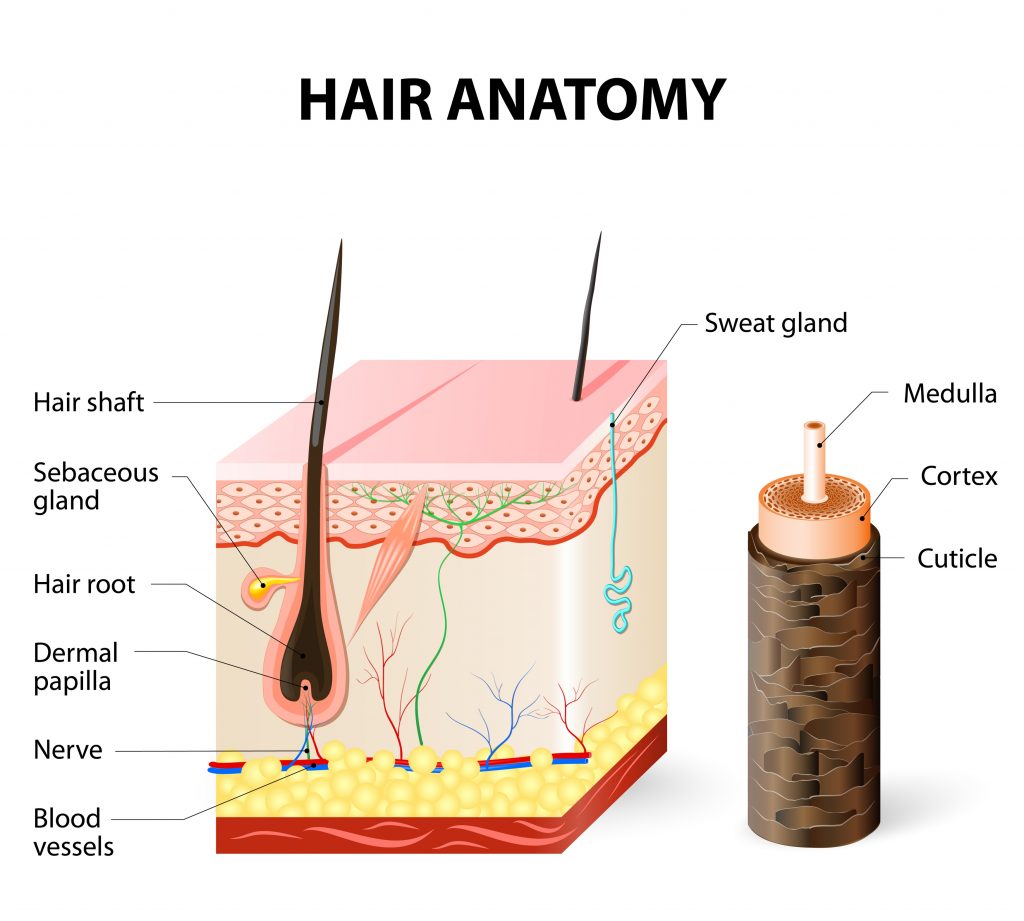Less Common Hair Disorders
Alopecia Areata
Alopecia Areata is a nonscarring, inflammatory condition, characterised by round patches of scalp hair loss. It can sometimes be seen on other areas of the body (eyelashes, eyebrows, man’s beard).
The characteristic patch of Alopecia Areata is usually round or oval and is completely bald and smooth. It has a rapid onset, but tends to spontaneously reverse.
Ocasionally, Alopecia Areata may progress to complete baldness, which is refferd to as Alopecia Totalis, and when the entire body suffers from complete hair loss, it is refferd to as Alopecia Universalis.
Alopecia Areata is considered to be caused by the body’s immune system, that attacks the hair follicle and disrupts the hair cycle due to a problem with the immune system’s inability to distinguish between the ‘self’ and ‘non-self’ tissue.
Anagen Effluvium
Anagen Effluvium is the release of the hair while it is still in its anagen(growing) phase. Occurs rapidly, often 2-4 weeks after the ‘causation trigger’ onsets.
Can be caused by chemotherapy, radiotherapy, malnutrition, chronic infections, iron deficiency or certain medications.
Usually, hair regrows to its fullness once the cause has been removed
Telogen Effluvium
Telogen Effluvium is a diffuse, nonscarring alopecia characterised by the anagen(growing) hairs prematurely entering the telogen(resting) phase of the hair cycle.
It can be caused by chronic illiness, metabolic changes, hormonal irregularities, childbirth, stress, diet, certain medications.Telogen Effluvium is usually a temporary hair loss.
Once the cause for the hair loss have been ascertained and corrected, the hair cycle should normalize and the hair usually regrown to its previous thickness (3-6 months after the treatment begins).
Traction Alopecia
Traction Alopecia is defined as hair loss resulting from either prolonged or repetitive pulling force to the hair.
Clinically,Traction Alopecia most often affects the frontal and temproral scalp areas, but it may also occur on many different regions of the scalp, depending on the individual’s hair grooming practices (chemical over-processing and/or incorrect styling, drying or brushing).
If these practices occur for a long term, can irreversible damage the hair follicles and produce scarring alopecia. It is reversible if diagnosed in the early stages and it’s cured by simply avoiding hair styling that puts excessive strain on the hair. It may take up to 3 months for the hair to recover.
Loose-Anagen Syndrome
Hairs can be easily and painlessly pulled from the scalp whilist the hair is still in its anagen(growing) phase. The hair is very thin, unmanageable, dull, dry and usually only grows to a few cm in length.
It is more common in children and often affects more girls than boys. The condition often improves in most children as they get older(often around puberty).

Cicatricial Alopecia
Cicatricial Alopecia, also known as Scarring Alopecia, is caused by the destruction of the hair follicle by a disease, infection or inflammation affecting the follicles themselves or by some indirect external process (ie. blow to the head, continuing over-processing and pulling of the hair).
The skin in the affected area often has a translucent or depigmented look, sometimes accompanied by inflammation and the hair loss is permanent and it can be patchy or diffuse.
Trichotillomania
Trichotillomania is a self-induced loss and damage of the scalp hair from repeted pulling or twisting one’s hair, usually in selected areas of the scalp.
It is due to irresitibile compulsive impulses,a strong impulse to pull hair and a great relief afterwards, which need to be addressed to a specialist as the first step of the treatment.

